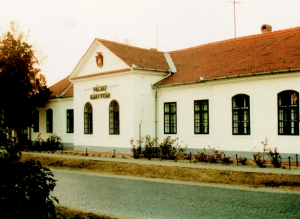Village with 7,330 residents. It is situated on the left bank of the middle section of the Danube, on the western edge of the Great Plain, at the eastern bridgehead of the bridge over the Danube, at the junction of national roads No. 51, 52 and 53.
The name of the settlement comes from the name of chieftain Árpád's son, Solt meaning 'having a princely origin'. According to the archaeologists, it was inhabited as early as the prehistoric times. The commercial route between Dacia and Pannonia led through this region. It was first mentioned as a town in 1348.
The Calvinist church was built on 1626 foundations in 1787. The eclectic Roman Catholic church is from 1880. The highest capacity broadcasting station in Hungary is on the outskirts of the town. The horse-riding centre in Révbér puszta, the free beach on the bank of the Danube, the Teleki mansion with its huge primeval park all await visitors in beautiful environment. An outstanding sight is the neo-classical Vécsey mansion built by count Károly Vécsey's - a martyr of Arad - father in 1843. Today it houses a library of 34,000 volumes. The building is surrounded by a memorial park. The cellar village on Meleghegy offers pleasant relaxation, where (5-600) cellars hollowed out in the loess wall with press-houses above them await visitors. The cellars were built about 20 m deep in the hill, which makes perfect storing of wine possible. This row of cellars is a unique feature of the town.
Traditional programmes await visitors all year round: Spring Days of Solt, Summer Music Evenings, ceremony on St. Stephen's Day, vintage festival.
